Using the Power of Art and Illustration to Communicate Science, with Neuroscientist and Scientific Illustrator Dr. Radhika Patnala
Art and science are often thought of as completely separate fields. However, rich overlap exists between the two fields, and they share many connections which are begging for exploration. These intersections include the sub-field of art illustration, scientific communication, and visual neuro-anatomy.
In order to explore this area, we spoke with Dr. Radhika Patnala of Sci-Illustrate. Dr. Patnala has a unique perspective on this intersection, as she operates at the intersection of these worlds: She is a neuroscientist, artist, and professional scientific illustrator. She impressed upon us the importance of efficient scientific communication, how scientists can better convey these ideas, and the many ways which art and science complement one another.
Since you’re both an artist as well as a scientist, what do you think are some of the under-appreciated connections between these two fields?
Both science and art are fundamentally concerned with the exploration and discovery of the unknown. The objects of inquiry are different, but they are united in this goal. In science, you’re exploring and trying to understand something out in the external world. In art, the exploration is internal - it’s a personal journey.
What makes for successful scientific communication?
Illustrations are very efficient forms of communication. You can say something with an illustration which would be almost impossible to say with words or would take you much much longer. Illustrations are incredibly efficient forms of communication.
Us scientists love complexity, but this can be an impediment to efficient communication. Much of this comes down to simplifying these ideas, strategically. It’s a fine balance between being detailed and being accessible. It’s important to strike the right balance here.
Beyond the sheer efficiency of the communication, images can also engage the audience in a way that is much more difficult to accomplish with simple text alone.
It’s also important to use these sparingly and strategically. Images should complement text but shouldn’t completely take the place of text when the message can be simply told with words, and the written word can do the job better.
What do you think is the most interesting, or surprising thing about how the human brain looks?
It’s amazing how complex the brain is. It’s also amazing how each brain is very different, each component is very different, and yet supports our consciousness. All of the different components, cell types, and connections coming together to create our inner lives.
It’s also fascinating to think about this from the perspective of abnormal neurological function. For example, In the healthy brain, I worked with cells called microglia, which help protect the brain, and also the maintenance of synapses—the connections between neurons that allow the brain to communicate. In some cases, this means microglia needs to constantly trim synaptic connections that aren’t needed in order for communication and memory consolidation to be more efficient. And when the proper functioning of this one cell type is disturbed, we see it disturbing proper neuronal function, and is seen to play in role in various neuropathologies, including ischemic stroke, schizophrenia, and depression.
How did you first become interested in scientific illustration?
I began as an artist from a very early age. My mother would use design software for interior designing which I would love to explore. Art was a very strong theme in my childhood, and I took up fine arts as a hobby.
This was all before I began pursuing science as a profession. And for this, I took a very traditional path. I pursued a PhD topic with a strong visual theme - neuroanatomy and studied the brain visually, and in-depth. I had a very artistic orientation to scientific inquiry. Examining neuroanatomy from this artistic perspective inspired me to look at the visual aspect of science much more seriously.
I also come from a very entrepreneurial family, and so the concept of running a business wasn’t new to them. Professionally speaking, I started out doing scientific illustrations, primarily with biotech, pharmaceutical, and academic groups. Over the past few years, my company, Sci-Illustrate, has grown to encompass visual scientific communications of multiple formats.
What was your motivation behind starting these training workshops?
For scientists, there’s a big unmet need in communicating their ideas efficiently, be it the research, a new finding, or convincing a grant body for funding. For most scientific education, the focus is exclusively on the science itself, and not on the communication of these ideas, even amongst themselves. Before scientists can undertake the crucial task of communicating their ideas to the general public, they first need to communicate to their own colleagues in conferences and other scientific forums.
This is a crucial skill not usually taught in graduate schools and to scientists at the moment, especially in terms of communicating to a non-specialist audience. That is where visuals can really help. This is the unmet need that the Sci-Illustrate Masterclass, our technical training workshops are filling so that scientists can work more efficiently with the right tools to do the job.
What advice would you give to younger professionals who may be interested in the field of scientific illustration?
I would say - be good at it! There is enough in-efficient content out there. If you are considering a career path in scientific illustration, it’s important to push the field forward, and this means working on your craft. This means honing your visual perception and perspective and training yourself to be able to analyze and distill down complex topics.
Photo by Alina Grubnyak via UnSplash
About Dr. Patnala
A valedictorian, Dr. Patnala received her doctorate in 2017 from the National University of Singapore. Her doctoral research specialized in Neuroscience and Epigenetics, with a Master’s (Hons.) in Biotech - Cancer Biology at The Australian National University. Through Sci-Illustrate, she solves design and communication problems for biotech and pharma, while striving to bridge the line between science, art, and design. Sci-Illustrate operates with an ultimate aim to enhance effective science communication within the research community and beyond. Radhika can be contacted on LinkedIn and via email at radhika@sci-illustrate.com.


